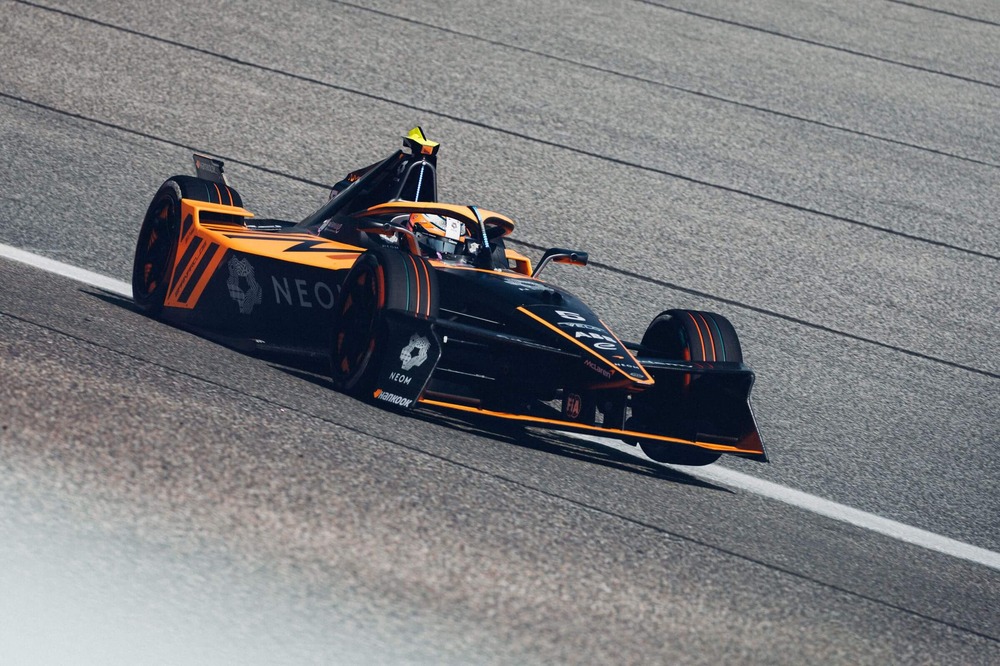Formula E has unveiled the new Gen3 Evo car which is set to debut in the all-electric series next season.
Formula E has revealed its latest racing beast, the GEN3 Evo which features significant upgrades that not only enhance its performance but also push the boundaries of electric racing technology.
On Thursday evening, The latest version of the car was revealed ahead of the Monaco E-Prix happening this weekend and former Formula 1 racer David Coulthard will showcase the car in public for the very first time on Saturday.
The newest contender in the all-electric championship is an improved version of the Gen3 car that has been in use for the past two seasons, featuring significant modifications to the bodywork and tires, as well as a more efficient utilization of power.
Dubbed as the Gen3 Evo, which is similar to the naming practice for refreshed versions of several GT3 cars, the latest car will boast a considerable improvement in speed compared to the current model.
The car’s acceleration has been greatly improved as it will be going from 0-60mph in 1.82s and a top speed of 200mph (321kph), surpassing the speed of the current F1 cars. Additionally, overall performance has been improved by approximately two seconds based on a lap at Monte Carlo.
The car’s most notable update is the incorporation of the front powertrain, which has been present in the Gen3 model since its release, but has not been utilized until now. This results in the car becoming all-wheel-drive (AWD) for the very first time.
The front axle will receive a maximum power output of 50kW from the 350kW limit, while the rest of the power will be allocated to the rear wheels. However, this allowance will only be applicable during the qualifying sessions, race start, and when activating Attack Mode.
It is expected that the electric motor will boast an impressive energy efficiency rate of approximately 90%.
The car’s improved front wing and updated sidepods should result in reduced aerodynamic drag compared to its previous model. Additionally, the new version of Hankook tires are expected to provide an increased grip by 5-10%, as stated by the supplier.
“We all know that speed sells in our business and if you’re a motorsport fan you love things that go fast and therefore to have a message of 1.82s to 60mph, I think is an amazing headline for us,” Formula E CEO Jeff Dodds said.
“It’s easy to make a really fast racing car, it’s easy to make a really good-looking racing car and it’s easy to make a racing car that’s got lots of technology that’s relevant, but it’s not easy to do all three of those things together.”
The development of the new car has been a joint effort between Formula E and the FIA for over a year with official safety car driver and former racer Bruno Correia being involved as the development driver for the project.
“The FIA and Formula E have been working hard on the development process of this new Gen3 Evo race car, which represents another significant leap forward in electric racing technology,” FIA president Mohammed Ben Sulayem said.
“I would like to thank both FIA and Formula E teams for the hard work which underlines our shared commitment to pushing the boundaries of sustainable motorsport, while delivering competitive racing.”
The car was unofficially revealed at the previous race in Misano as Formula E held media events with the Gen3 Evo on the track prior to its official debut in Monaco.
Teams will have the opportunity to upgrade their current chassis with the necessary changes required in the mid Gen3 cycle ahead of the Gen4 debut in 2026. This will not only result in cost savings, but also reduce the amount of unused parts.
“From a cost-perspective and sustainability perspective, we don’t want to be tearing everything up and throwing it away,” said McLaren team principal, Ian James. “That’s where we get the wholesale generational changes, so within that four-year period we have the opportunity after the first two years to make this change.
“That fits with the homologation cycle which goes hand-in-hand with the manufacturers, because the manufacturers have the opportunity to hit the reset button to homologate any new powertrain going forward.”





